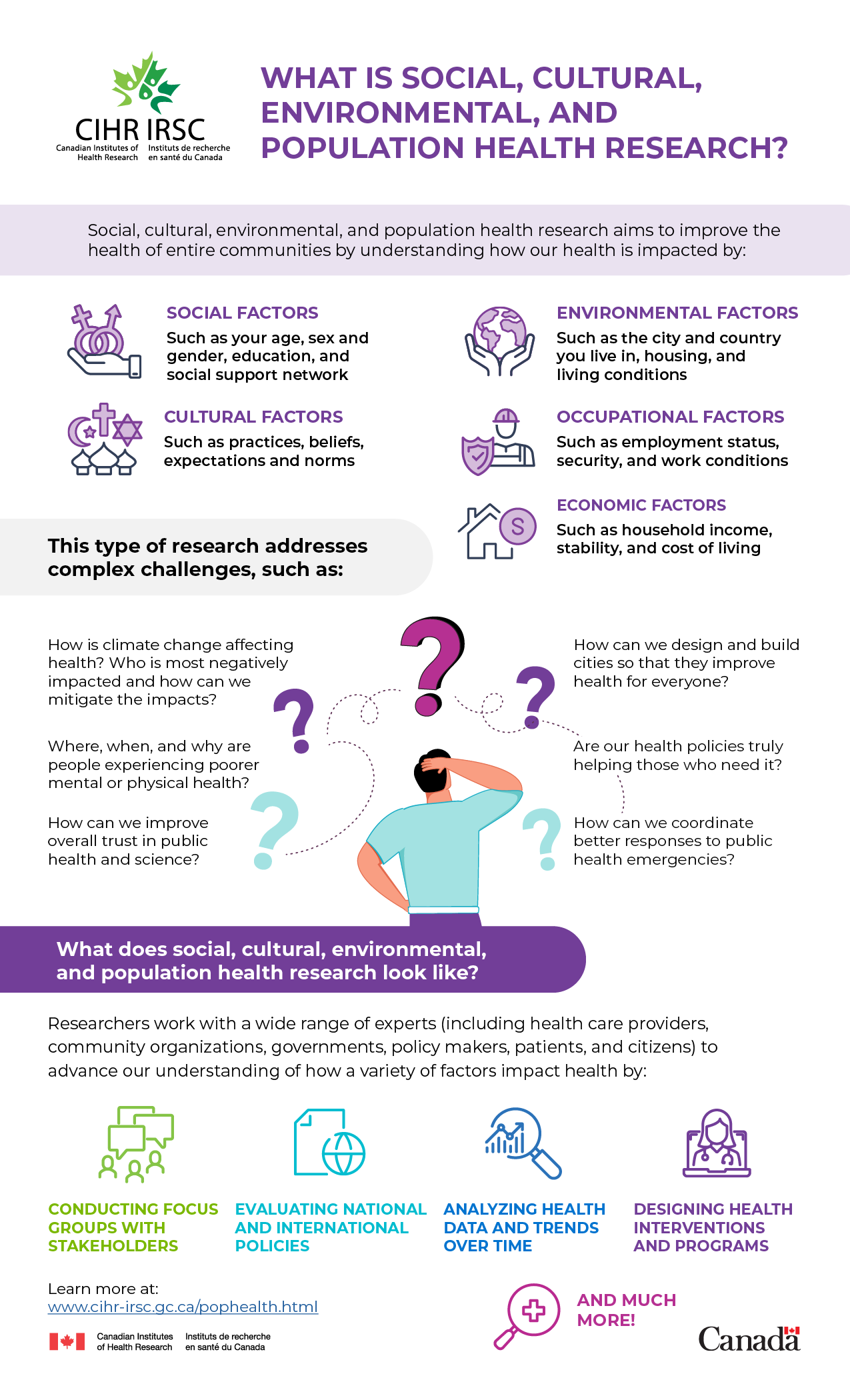Infographic: What is Social, cultural, environmental and population health research?

Long description
Social, cultural, environmental, and population health research aims to improve the health of entire communities by understanding how our health is impacted by:
- Social factors
- Such as your age, sex and gender, education, and social support network
- Cultural factors
- Such as practices, beliefs, expectations and norms
- Environnemental factors
- Such as the city and country you live in, housing, and living conditions
- Occupational factors
- Such as employment status, security, and work conditions
- Economic factors
- Such as household income, stability, and cost of living
This type of research addresses complex challenges, such as:
- How can we design and build cities so that they improve health for everyone?
- Are our health policies truly helping those who need it?
- How can we coordinate better responses to public health emergencies?
- How can we improve overall trust in public health and science?
- Where, when, and why are people experiencing poorer mental or physical health?
- How is climate change affecting health? Who is most negatively impacted and how can we mitigate the impacts?
What does social, cultural, environmental, and population health research look like?
Researchers work with a wide range of experts (including health care providers, community organizations, governments, policy makers, patients, and citizens) to advance our understanding of how a variety of factors impact health by:
- Conducting focus groups with stakeholders
- Evaluating national and international policies
- Analyzing health data and trends over time
- Designing health interventions and programs
- And much more!
Learn more by visiting the Social, cultural, environmental and population health research webpage.
- Date modified: